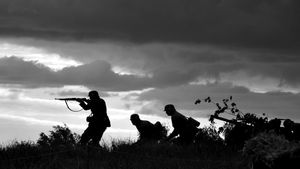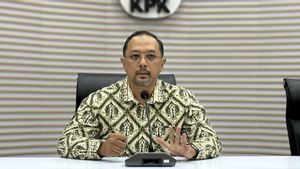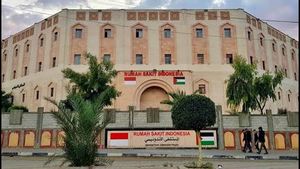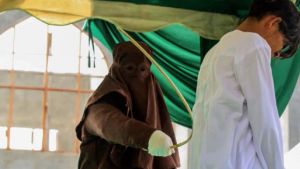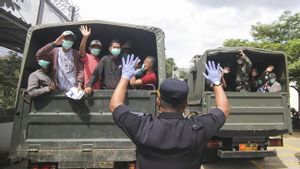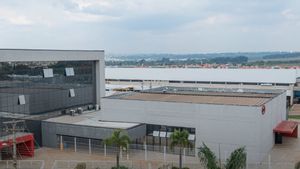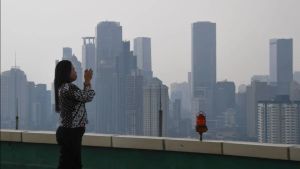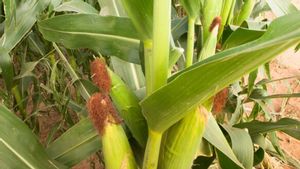JAKARTA - The General Election Supervisory Agency (Bawaslu) mapped 454 polling stations (TPS) in Cimahi City prone during the 2024 Cimahi Pilwalkot.
The Coordinator of the Prevention, Community Participation, and Bawaslu Community Relations Division of Cimahi City, Akhmad Yasin Nugraha, said this mapping was to anticipate obstacles and disturbances at the TPS at the time of voting on 27 November.
"This was done for five days from November 10, 2024 to November 14, 2024. Mapping was carried out on 823 polling stations spread across 15 urban villages located in three sub-districts in Cimahi City," said Akhmad in his statement, Saturday, November 24, quoted by Antara.
The mapping of vulnerability, he said, was carried out using eight variables and 25 indicators.
The variables and indicators of potential TPS vulnerable are first, the use of voting rights (Unqualified DPT, DPTb, potential DPK, Election Organizers outside of domicile, disabled voters registered with DPT, and/or PSU History/PSSU).
SEE ALSO:
Second, security (the history of violence, intimidation and/or rejection of voting). Third, money politics.
Fourth, SARA politation. Fifth, neutrality (election organizer, ASN, TNI/Polri, Village Head and/or Village Apparatus).
Sixth, logistics (power of damage, deficiencies/excessions, and/or delays). Seventh, the location of the TPS (hard to reach, prone to conflict, prone to disasters, close to educational institutions/mining factories, close to the home of the Paslon/post campaign team, and/or special locations), and the eight electricity and internet networks.
As a result, in three indicators of high-prone TPS potential consisting of 226 polling stations with additional voters. Of these, 97 polling stations are located in North Cimahi District, 115 polling stations are located in Central Cimahi District, and 14 polling stations in South Cimahi District.
Then 114 polling stations are located in disaster-prone areas (floods, landslides). Of these, 25 polling stations are located in the North Cimahi District, 24 polling stations in the Central Cimahi District, and 65 polling stations in South Cimahi District.
Then 41 polling stations with DPT voters who are no longer eligible (died/died TNI/Polri status). Of these, 25 polling stations in North Cimahi District, two polling stations in Central Cimahi District, and 14 polling stations in South Cimahi District.
In five indicators of the potential for moderately vulnerable TPS, it consists of 13 difficult-to-reach TPS (geography and weather). Of these, 12 polling stations in North Cimahi District and 1 polling station in South Cimahi District.
Then 12 polling stations near educational institutions whose students have the potential to have the right to vote. Of these, two polling stations in Central Cimahi District and 10 polling stations in South Cimahi District.
Then 12 polling stations with disabled voters registered with the DPT. Of these, three polling stations are located in North Cimahi District, five polling stations in Central Cimahi District, and four polling stations in South Cimahi District.
Furthermore, 10 polling stations are near the homes of candidate pairs and/or campaign teams for candidate pairs. Of these, one polling station in North Cimahi District, three in Central Cimahi District, and six in South Cimahi District.
And eight polling stations located near the working area (factories, mining). Of these, two polling stations in Central Cimahi District and six polling stations in South Cimahi District.
In the seven indicators of the potential for low-prone TPS consisting of four polling stations with KPPS which are voters outside the domicile of the TPS where they work in Central Cimahi District.
Then four polling stations with a history of giving money or other materials in South Cimahi District.
Then, four polling stations with internet network problems at the TPS location located in Central Cimahi District.
Furthermore, three polling stations that have a history of deficiencies or advantages and even no voting logistics and vote count are available during the election, namely two polling stations in Central Cimahi District and one polling station in South Cimahi District.
Then one polling station that has the potential for voters to meet the requirements but is not registered with the DPT, namely in Central Cimahi District.
Then a polling station with insulting/instigating practices among voters related to the issue of SARA around the polling station location, namely in South Cimahi District.
Furthermore, one polling station with a history of re-voting (PSU) and/or recounting ballots (PSSU) is in Central Cimahi District.
Regarding the data on the vulnerable TPS above, said Akhmad, the Cimahi City Bawaslu carried out prevention strategies, including conducting surveillance patrols in vulnerable polling stations. Then coordination and consolidation to relevant stakeholders.
Then, socialization and political education to the community. And collaboration with election monitors, electoral activists, community organizations and participatory supervisors.
"Furthermore, providing public complaint posts that can be accessed by the public both offline and online. As well as conducting direct supervision of logistics distribution and ensuring logistical availability at TPS," he said.
The English, Chinese, Japanese, Arabic, and French versions are automatically generated by the AI. So there may still be inaccuracies in translating, please always see Indonesian as our main language. (system supported by DigitalSiber.id)





